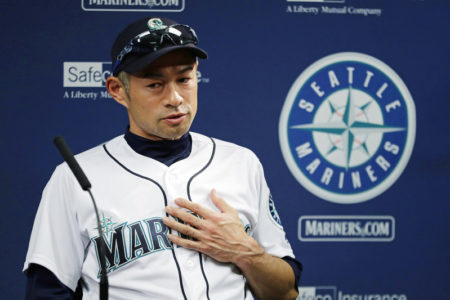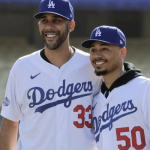Looks Like the End for Ichiro Between the Lines
 I’ll always remember the one and only time I saw Ichiro Suzuki (and we don’t really need to use his last name, do we?) play at Safeco Field in Seattle. It was 2002, when he was the reigning AL Rookie of the Year and MVP, a dual award that announced his arrival in the majors in a big way.
I’ll always remember the one and only time I saw Ichiro Suzuki (and we don’t really need to use his last name, do we?) play at Safeco Field in Seattle. It was 2002, when he was the reigning AL Rookie of the Year and MVP, a dual award that announced his arrival in the majors in a big way.
The term “SoDo Mojo” was used freely, and Lou Piniella‘s team was coming off an astounding 116-win season in 2001. Safeco Field was a beautiful new stadium, Seattle was an exciting place to be in the pre-Amazon days, and—only in hindsight does this seem important—nobody had a smartphone yet. If you wanted to take a picture, you still had to use a camera with film inside, and then take that film into a store to be developed. It seems primitive now, but that speaks to how long Ichiro has been playing at the major-league level.
Whenever he came to bat, there would be dozens of flashbulbs popping with every pitch. I had read about his exploits in the papers (because we still bought them in those days) and had watched his amazing throw to cut down Terrance Long many times on a still relatively new thing called the internet. Ichiro already was showing everyone what an amazing player he was, and would continue to be for the next decade and more into the future.
Ichiro’s success at the plate led him to the 3,000 hit club, and, if you count his hits in Japan, to the top of the all-time hit list. I’m staying out of that controversy here, but I will say his accomplishments are without equal. But it’s also important to remember how Ichiro brought about a seismic shift in the role of Japanese players within MLB.
At the time of his arrival in Seattle, Japanese players already had achieved success on the pitcher’s mound, with Hideo Nomo being the most notable example. It was 20 years ago that I saw Nomo match up against a rookie named Kerry Wood at Wrigley Field on a Saturday afternoon. Those were some good times. But Japanese players hadn’t yet established themselves as position players, until Ichiro came along a few years later.
Ichiro’s runaway success as an everyday player led to Hideki Matsui and So Taguchi and Nori Aoki and many other Japanese stars making their way to this side of the Pacific. And the success of Shohei Ohtani as a two-way threat is doubtlessly the result of Ichiro’s trailblazing, as Ohtani was probably first picking up a baseball in the days of the countless flashbulbs being used in Seattle.
Shohei vs. Ichiro would have been quite a sight to behold on the field, and the suddenness of Ichiro’s departure for the Mariners’ front office disappointed Ohtani. Ichiro says that he’s not retiring yet, but we won’t see him again on the field again until he’s 45, if at all. So, barring something truly remarkable, this looks to be the end for Ichiro, at least as an on-field presence. His legacy, however, will endure for decades to come.


























